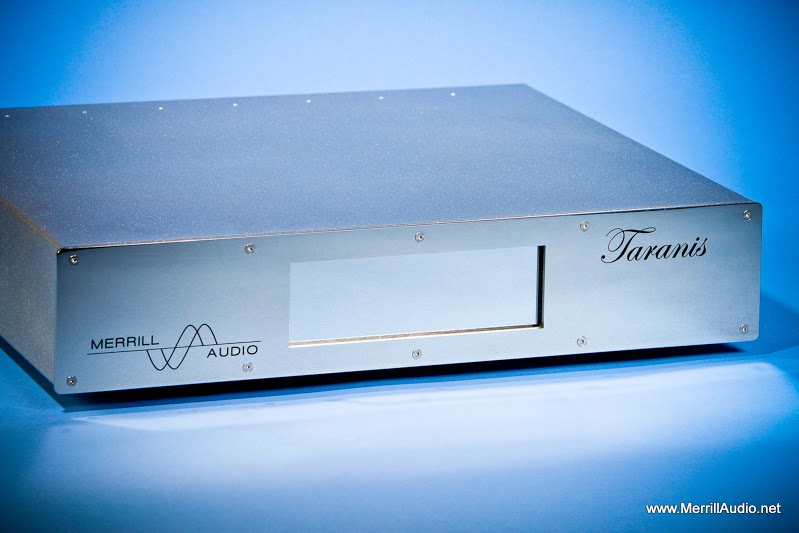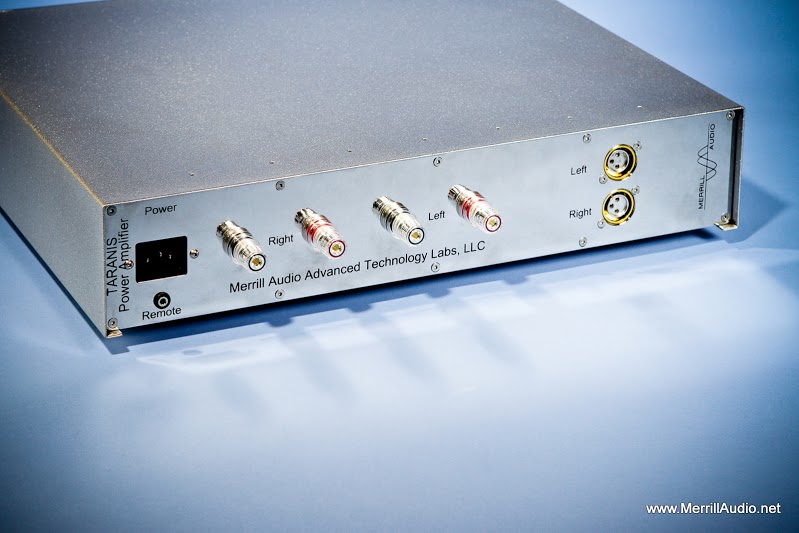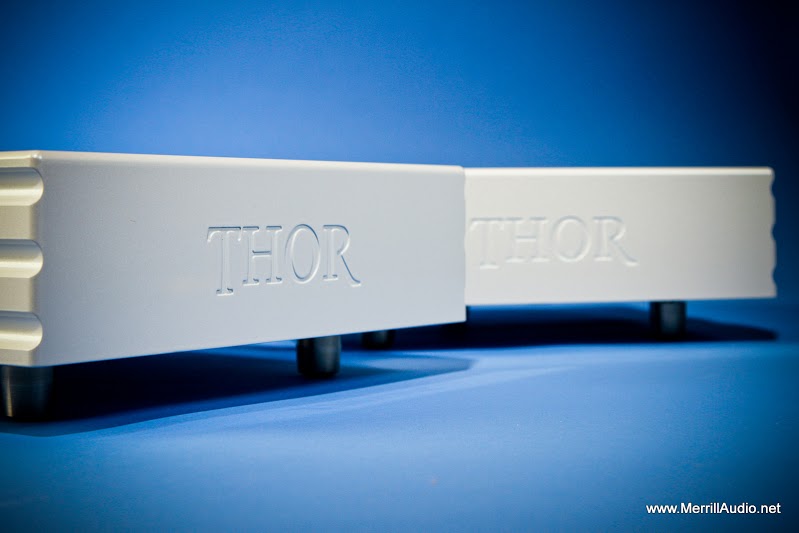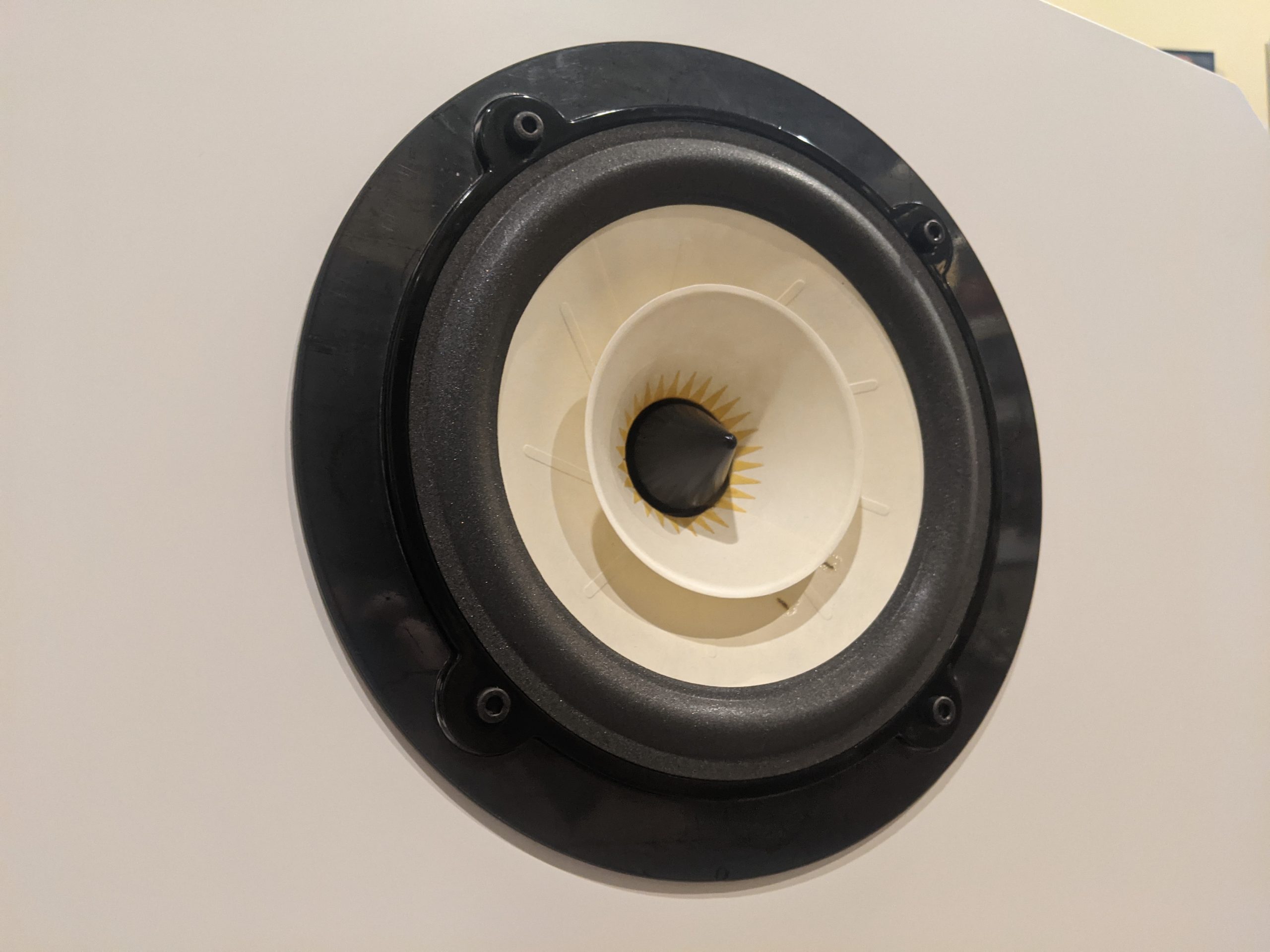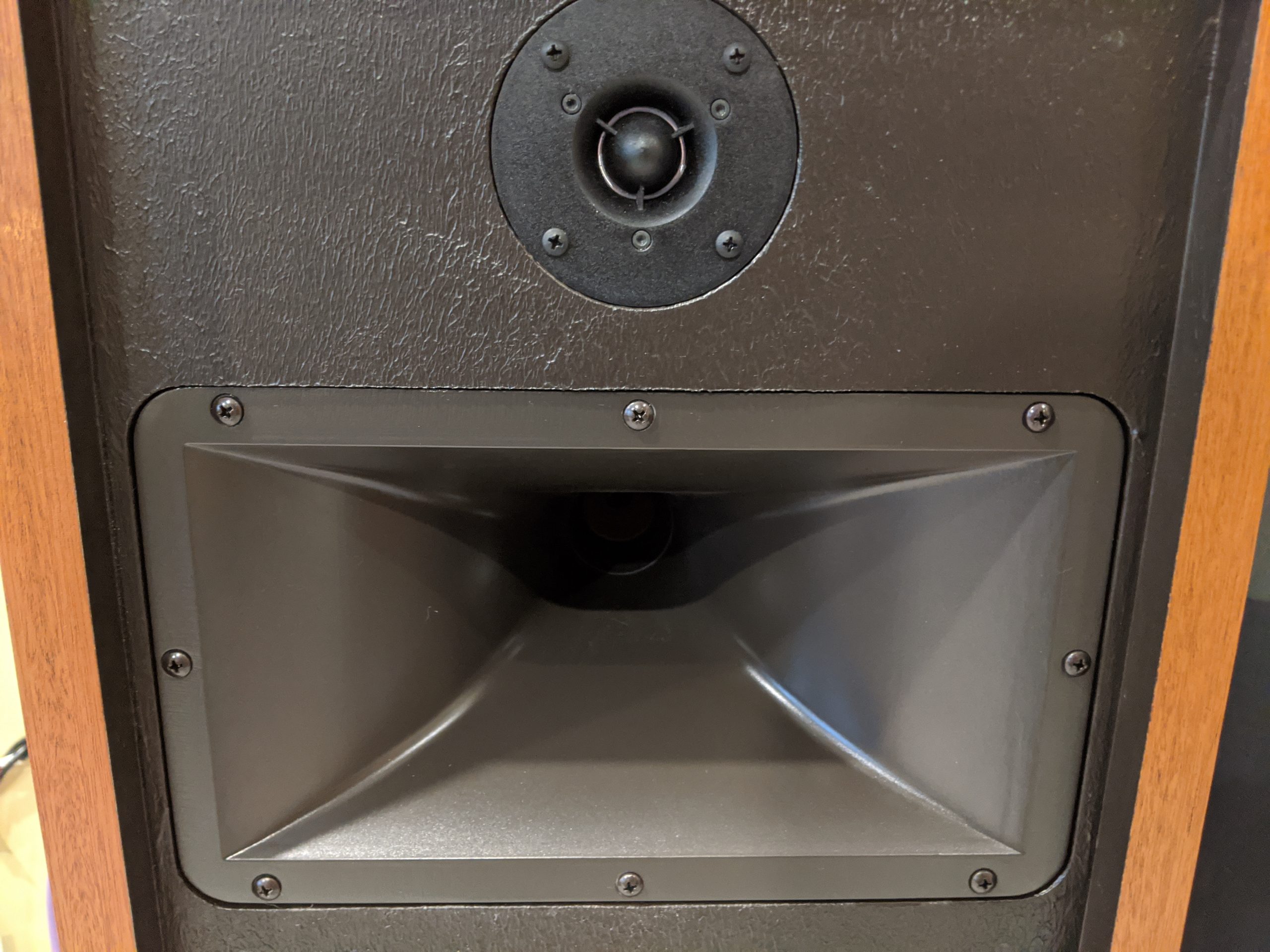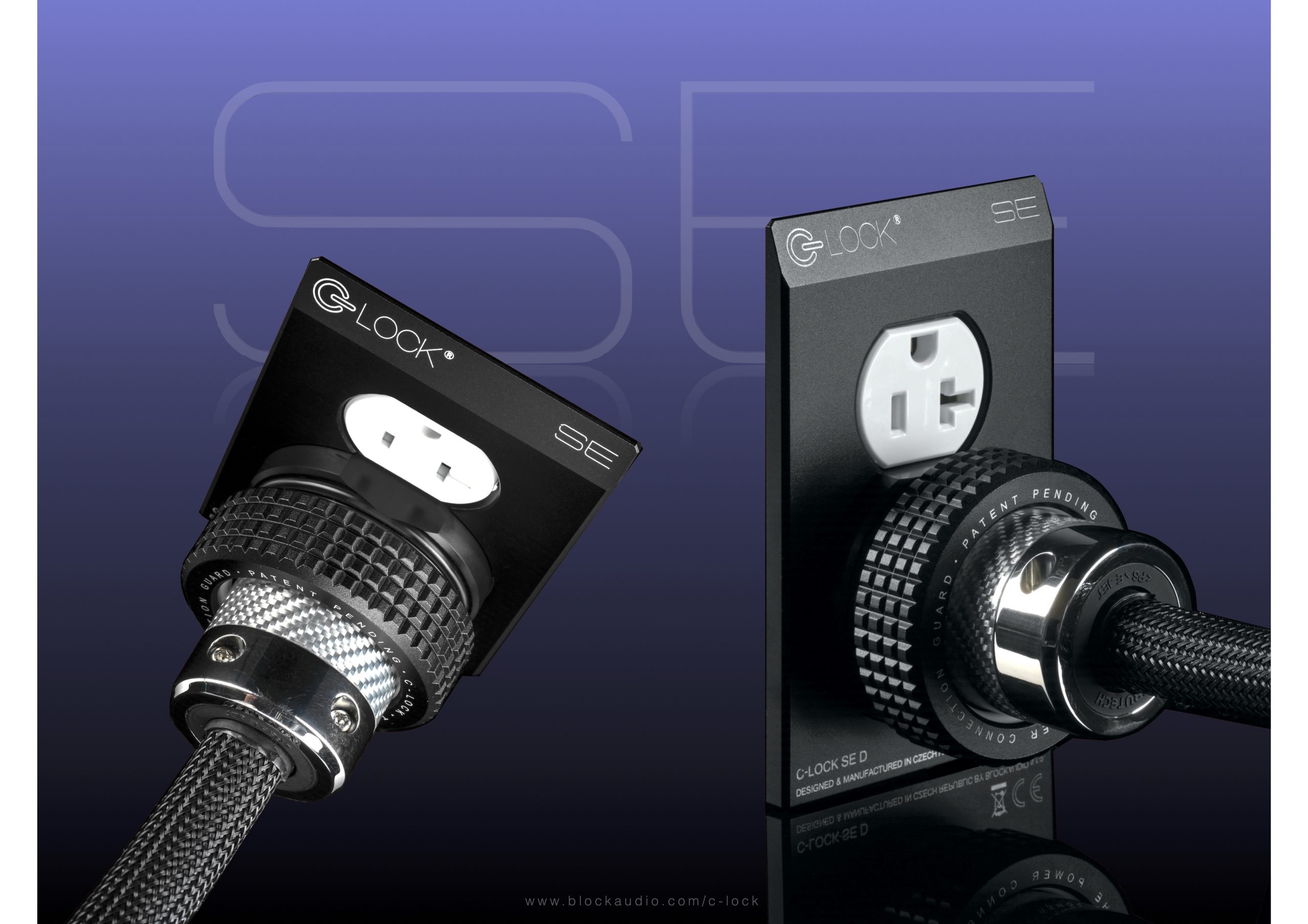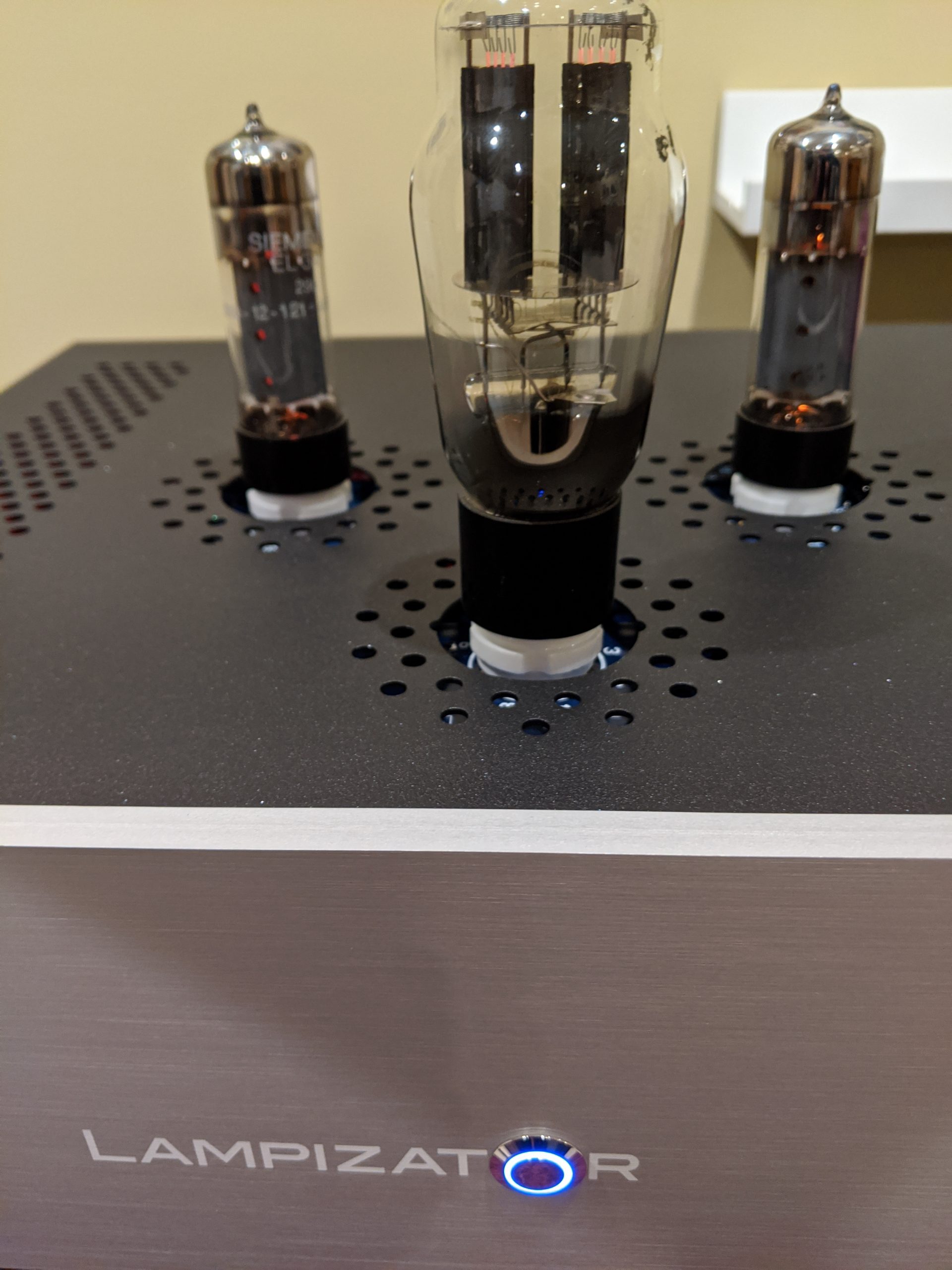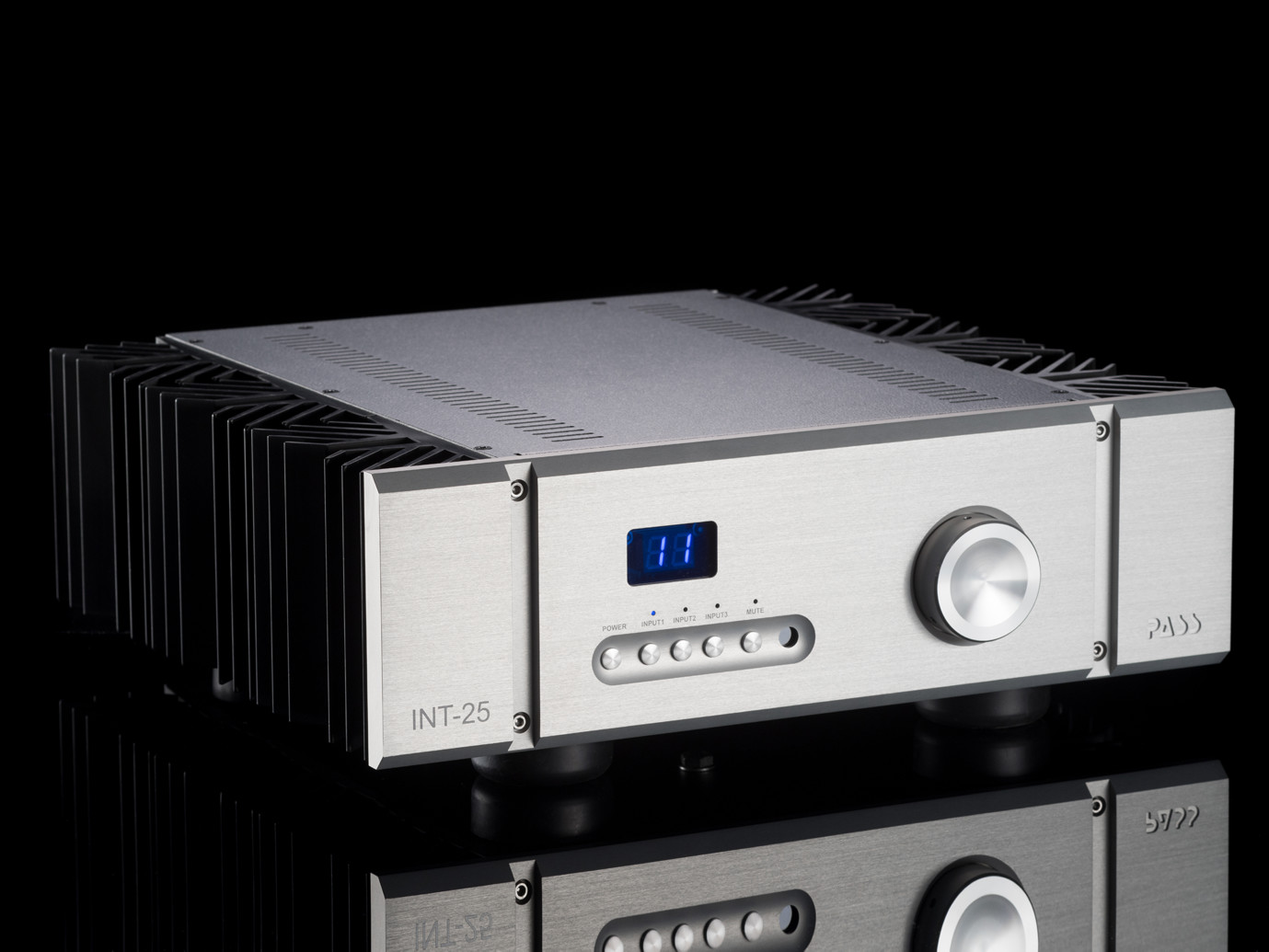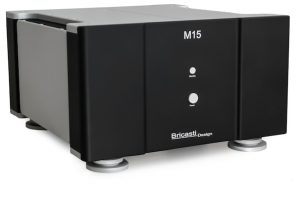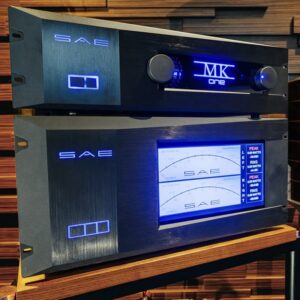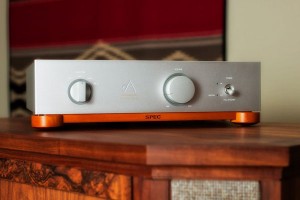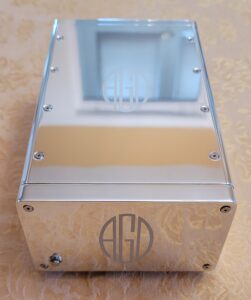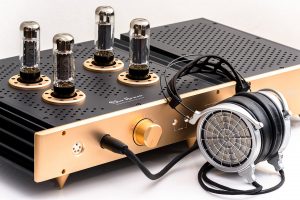I first met Merrill Wettasinghe at AXPONA 2014 where he was showing his Veritas monoblock amplifiers with Sadurni horn speakers. It was quite an incredible system, and to say I was impressed would be an understatement. After enjoying the Merrill Audio room once again at the 2015 show, Mr. Wettasinghe offered to send me his new Taranis stereo amp for a review. Based upon the Hypex NC500 amplifier module, the Taranis would be my first in home experience with an NCore amp. Just before the Taranis was shipped to me, Merrill upped the ante with a pair of Thor monoblock amplifiers. The Thor's are based on the Hypex UcD platform with some trickle-down Vertias/NCore tech to sweeten the pot, so the two were certain to make for a fun bit of Merrill amp-roulette. While both amplifiers were in-house at same time, this article will focus on the thunder of Taranis, and hammer home a few comments about Thor for comparison sake.
D-Foreword
Until 2015, my reference amplifier had been a custom single-ended 845 tube amp. These days, my amp of choice is a solid-state design; the Pass Labs XA30.8. And although Class D has never been my reference, this is not my first digital amp fiesta. Many years have passed since reviewing an early version of the Tripath-based Red Wine Audio Clari-T, and I still own a Panasonic SX-50 (TI chipset?) that resides in another system. Not long ago, I wrote a deservedly glowing report on the Rogue Audio Pharaoh hybrid integrated amplifier and for a time, owned a very nice sounding pair of Channel Island Audio D100-B monoblocks (both based on the Hypex UcD module). The Rogue and CIA amps use custom linear power supplies whereas the Merrill offerings are Hypex switching power supplies; the Taranis utilizing the same power supply as Merrill's flagship Veritas amplifiers.
From the Merrill Audio website:
"To deliver the fast transient speed of high end amplifiers, and the voltage that can drive Electrostaic speakers with ease, the Taranis Stereo Amplifier uses the same power supply as the VERITAS Monoblock Power Amplifiers, providing low noise, high dynamics and high voltage that very few linear power supplies can match.
To ensure the best signal transfer, silver plated, pure copper wire with Teflon sleeving is used throughout. Cardas XLR inputs have gold plated housing with rhodium plated case and silver plated copper pins for the best connections. The Speaker binding posts are pure copper plated with Rhodium for good signal transfer as well as longevity. Furutech gold plated IEC is also used."
Dressed Two Impress
Both the Taranis and the Thor's are quite striking in appearance, and as I unpacked them, I noted a reassuring weightiness and attention to detail in their handsome chassis'. While the more expensive Thor's are crafted from a solid aluminum billet and painted to a spectacular black mirror finish; the grey steel body and stainless-steel front plate of the Taranis is drop-dead gorgeous too. Both amps place control switches in the front, on the bottom. The Taranis is "on" when plugged in, but it has two toggle switches underneath that control its operation: The right-hand switch changes the state of the amp from "mute" to "play", the left, toggles the display on and off. Next to the left toggle switch is a little wooden knob that controls display brightness. The display uses LEDs to indicate the condition of the amp. When switched out of yellow "Mute" condition, blue LEDs indicate all is well. The display also offers linear LED power meters, showing power demand in 3db steps for each channel.
From the Merrill website:
"The chassis used for the Taranis Power Supply capitalizes on the chassis used for the Jens Phono stage, which is a steel chassis for reduced EMI/RFI interference. For eye catching looks and build quality, Mirror finish stainless steel front panel is used.
Power meters display the power from -60db to 0db in 3db steps. -60db to -21db is in green LEDS's, -18db to -12db is in yellow and -9db to 0db is in Red LED's."
The horizontal green/yellow/red indication bars remind me of a DBX 1BX range expander I owned back in the 1980s. There was a time when I could drive that 1BX into the red, but there is no way I could stand the volume level of 400 watts of Taranis power driving my VSA VR-35 speakers that high. Whoa. No. The Taranis' display panel may well be a love it or hate it relationship for many, but for me, Merrill put a little fun into functional; like the big blue meters on a Mac amp, when the Taranis meter is spiking the green (and tickling the yellow), it is instantly recognizable. Put me in the love it camp.
Sound Impressions
Based on the new Hypex NCore NC500 amplifier module, the Taranis is clearly a class D amplifier--as in clear as D window--I hear no discernable noise at idle, and with a sound so clean, quiet, and extended at both ends of the frequency range, it immediately makes a statement. The spooky blackness and sharply outlined audio images reminded me of hearing the Veritas amps during my visits to Merrill's AXPONA room. The Chicago show is the only place I have heard NCore amplifiers, and while the NC500 is a prime contributor to the Taranis' sonic signature, I'm betting that Merrill's own input stage is also a key ingredient to my memory rebound.
From the Merrill website:
"The input stage, usually found in the most expensive equipment, is a fully differential design for maximum noise rejection with high input impedance of 100k. The input stage provides a full peak to peak signal of 13.5volts with 300mA of current to the output stage for fast, clean high performance, all with ultra low distortion. It is run hot to give you that extra edge of musical sound. There is a full separate power supply filter just for the input stage which is comprised of 2 separate stages, an input buffer for full high impedance isolation and a differential high current line driver."
The Taranis is not warm, nor is it a clinically exacting assault on the ears. It is, however, as close to tonally neutral as any amplifier I've ever auditioned. Yet even as every recording played was distinctly of its own making, I could quickly tell I was listening to the Taranis. While the class D amps I've listened to all seem to have a unique and perceptible aural signature, this was clearly sonic thunder from the entry-level Merrill and not the Thor's, or the Pass. The complete lack self-noise and blacker than black silence between notes gives a stark relief to the leading edges and coupled with its immense power, dynamics are outstanding. Bass is highly resolved, well-deep, and extremely well controlled. Musical images are a bit smaller and flatter than my reference and the stage is generally inside the speakers. This is not to say there is a lack of musical information coming from outside the speakers, there isn't really, but it seems more selective, and perhaps more obvious, than my reference XA30.8—like the twinkling tap of a cowbell that materializes out of thin air in Fleetwood Mac's "The Chain"—It actually startled me.
And yes, I do think we need more cowbell.
The Taranis isn't lush and it isn't lean; rather it is a window, sometimes open all the way, for better or worse. As I listened, it was if every thought I had about the sound of this amp could be undone by the next record, CD or audio file played. Occasionally, I noted a slight bit of grain in the upper octaves, and Taranis was not always kind to poor recordings, but on a spectacularly recorded track—Wow!—was my normal reaction. In my system, the amp liked to be turned up a bit in order to really hear it hitting on all cylinders and while it is incredibly detailed and throws that detail right in front of your nose, there was a little less transparency than with the Pass or Thor's. When I quit thinking like a reviewer and got back to my discourse-writer's mode, or even music loving listener, the Taranis left me speechless. It asserted its electrical dominance over my speakers with effortless abandon, and the testosterone-fueled dynamics wouldn't let me quit listening to anything that rocks. I'm slightly disappointed the amp isn't as big as a house.
Even though it is what I am supposed to do as an audio writer, I am not sure I can put into words all the sonic abilities of the Taranis, as it has a chameleon-like way that is hard to track. Sometimes I thought I could tell it is was a Hypex-based amplifier—due in large part to its eerily silent background and high level of detail; but it exhibited none of the technically gifted, yet somewhat emotionless sound that I'd noted in some Class D designs; including my own Panny SX-50. It seems to me these new Ncore-based Class D amps have all the required audiophile appurtenances; incredible bass, treble through the roof, and wonderful tonality. But beyond all the Hifi jargon, they are toe-tappingly musical too.
The Taranis isn't likely to smooth over a bad recording, but everything else about this amp is smartly positive. Bass is resolved, and every note through the mid-bass is distinct and tonally fleshed out. Treble is wonderful; cymbals sparkle with crispness and shimmer and instruments like soprano sax, soar. Midrange, while not front and center in the midst of this bass-monster's lair, is very well done. The timbre of piano is beautifully correct, and vocals have presence and emotion. Imaging and depth are excellent and venue space is well-delineated. This is an exciting amp that wears its musical heart on its steel chassis sleeve. It does not sit idly by as the music passes through, yet it is not colored or cuddly. It is simply lit-up and highly detailed and listening to the Taranis is like a joyous sonic romp through a high fidelity funhouse--there is a surprise around every note.
Picking up Thor's Hammer: The Merrill Audio Thor Monoblock Amplifiers
Short Comparo
The Thor's had some hours on them and you could tell it was not their first road trip. Still, with their beautiful finish, engraved logo, and Stillpoints Mini-Riser feet, the Thor's are quite striking in their simple elegance. Merrill includes a custom designed power cord using 14AWG 27 stranded silver plated Alpha pure copper wire from Furutech and pure copper contacts, and a Rhodium over silver plated electrical plug and IEC from Cardas for each amplifier. For the reader's information, there are a few additional options available for the Taranis, the one discussed herein was stock.
When they are "side by side" in the same system, it is reasonably simple to tell the difference between the two amps, especially when using a passive volume control like the Bent AVC-1. And while the differences from the Taranis to the Thor are easy to hear, they are oft times difficult to articulate. Both are very powerful, but the Taranis really puts current to the cones. The Thor's handle softer musical passages better and are better at low level listening. The Taranis provides detail like crazy, but the Thor's are slightly more transparent and resolving of inner-detail. The Thor's are warmer and have more harmonic texture. Treble is extended and sweet, but bass is not as visceral as the thunderous Taranis. Dynamic contrast is very good in both amps, but where the Taranis is oh crap my hair's on fire dynamic, the Thor's are more controlled. Not reticent mind you, but compared to the Taranis, they have a "Would you like a punch in the gut with your afternoon tea?" vibe. In my view, the Thor's offer a more developed, "midrange-centric" sound; with a deep, wide, multi-layered stage and provide a more coherent sonic picture of complicated music. The faster than a speeding bullet-train Taranis has more leading edge push, but it stops on a really small dime too; and while it does have a good finish to a note; the Thor's have a wonderful trailing decay that seems more finely finished.
Both Merrill amps are differentially balanced and I am using Cardas XLR to RCA adapters provided by Merrill Audio to run them, therefore, I cannot comment on either amp's sound in balanced operation. One could assume they might sound at least incrementally better, so you must take this into account when reading my comments.
In my system, it seems as though the Taranis has a gear box that needs to hit a certain RPM in order to really blossom, so perhaps the Taranis would benefit from an active stage to come alive at low listening levels. Indeed, it does seem to improve in this regard with my vinyl source and the Wright Sound WPP100C phono stage in the loop. However, even in the LP chain, the Taranis still seems a bit truncated until the remote volume "dial" on the AVC-1 is cranked clockwise and the LED meters hit 4-5 bars of green-to-go power. All systems have a sweet-spot, and when the Taranis hits that magical place, its massive power wakes the slumbering Von Schweikert's and places them firmly under its control. Transparency and resolution improve, bass is terrific, and the sonic-beauty of this green-god of thunder is fully on display.
So what then, can you expect for the $2300 difference in price from the Taranis and Thor? It's probably not this simple, but I'm going to make it so. The Taranis is not quite as refined as its wee big brothers, Thor. The Taranis' low-volume performance, while certainly pleasurable, is not the full measure of the Merrill mono amps with my equipment, nor does it have as high a level of harmonic texture in the midrange. Both are stellar performers. And while the Thor's hammer is a bit more complex and polished, what the Taranis does right, it does very right.
The Endgame
I mustn't forget to mention the environmentally friendly power requirements of Class D designs, as going-green and cost of operation should never be overlooked. But we are serious hobbyists—audiophiles—and Merrill Wettasinghe has given us three great choices at different price points. I really enjoyed the power and chutzpah of Taranis; and the wonderful stage and musical flow of the Thor's. As we all know, building an audio system is a question of balance. While superb with my passive AVC-1 linestage, as a tube lover gone passively bad, I pondered the outcome of teaming the visceral intensity of the Taranis with a sweetly singing 6SN7 based preamp. Although unable to affirm the merit of this thought, the result could be quite engaging.
If I was forced to come up with one word to describe the Taranis, I think it would be vibrant. Yes, the Merrill Audio Taranis Stereo Amplifier is incredibly quiet, massively powerful, and alive…And dynamic…And kick-ass…And fun. Go hear one for yourself. I think you'll come away impressed.
Merrill Audio Taranis Stereo Amplifier
Retail $2500 USD
Merrill Audio Thor Monoblock Amplifiers
Retail $4800 USD per pair
Merrill Audio Advanced Technology Labs
LLC80 Morristown Road, # 275
Bernardsville, NJ 07924
(415)-5MA-HiFi
(562-4434)




